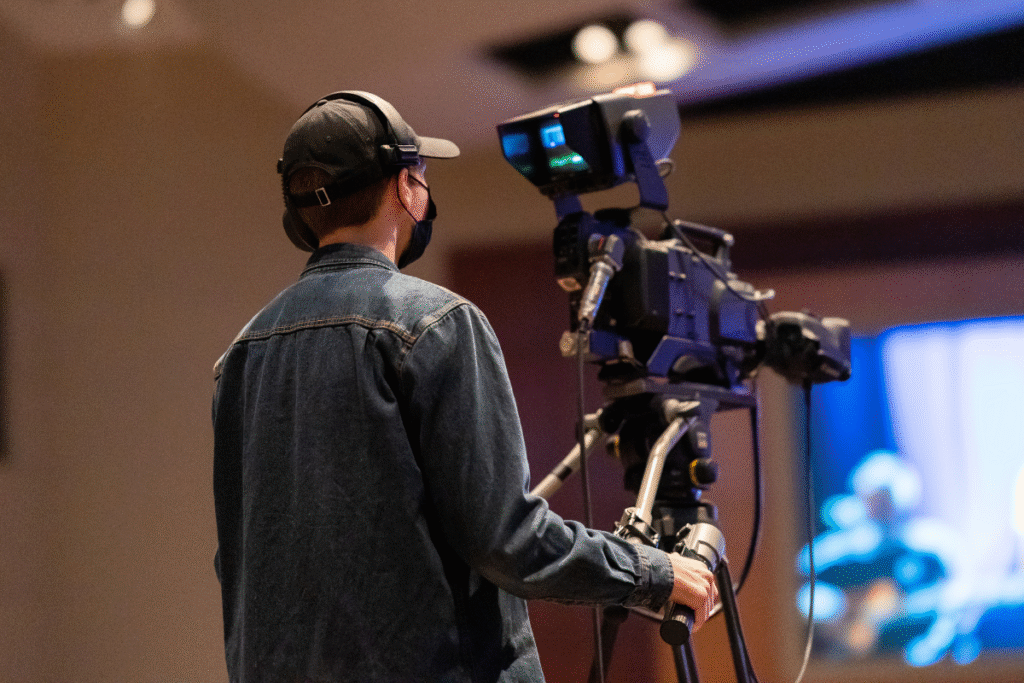Creating exciting videos and professional-grade videos is about making good videos rather than having the latest camera or software; it is about accomplishing techniques that let your work through. Whether you are an amateur or an aspiring filmmaker, there are key videography tips to help efficiently create good content. The guide provides some important videography tips, as well as the best cameras and software. Also included are creative ideas to escalate your videos with very simple videography tips.
1. Master the Basics of Videography
Understanding Camera Settings
Every great video starts with knowing the inner workings of the camera: from the DSLR to the mirrorless camera to the cellphone. These basics are crucial when shooting videos:
- Resolution: At least shoot in 1080p or 4K for professional output.
- Frame Rate: Go for 24 fps to get that cinematic feel; 30fps for a more standard look; and 60fps or even higher in cases of slow motion.
- Shutter Speed: Keep it twice your frame rate (e.g., 1/50 for 24fps) to avoid unnatural motion.
- ISO: Keep it as low as possible to avoid grainy footage.
- White Balance: Again, adjust that according to lighting conditions to avoid unnatural color tones.
Stabilization Techniques
Shaky footage can ruin an otherwise perfect video. To ensure stability:
- Use a tripod for static shots.
- Invest in a gimbal stabilizer for smooth motion.
- Practice handheld shooting with steady movements.
2. Choose the Right Videography Camera
The best camera really depends upon the skill level and project. Here are some recommendations:
- For Beginners: Canon EOS M50, Sony ZV-1 or iPhone 14 Pro (for smartphone videography)
- For Intermediate Filmmakers: Sony A7 III, Panasonic GH5 or Blackmagic Pocket Cinema Camera 6K
- For Professionals: Canon EOS R5, Sony FX3 or RED Komodo.
3. Enhance Your Videos with Videography Software
The role of editing is exceptionally critical in delivering professional video quality. The following are the best software options for video editing:
- Beginner-Friendly Options include: (for Mac), CapCut, or VN Video Editor (Mobile)
- Intermediate Options include: Adobe Premiere Pro, DaVinci Resolve, or Final Cut Pro (Mac)
- Pro Options include: Avid Media Composer or give DaVinci Resolve Studio for cinematic-grade editing.
4. Improve Lighting for a Cinematic Look
Drop the waymaking-week videography tips for anybody. These tips will force it to work in your way:
- The Natural Light – The golden hours for early morning and late afternoon when the light is soft and flattering.
- Three-Point Lighting Setup – Three types of lighting-key light, fill light, and backlight: they all build depth and dimension to create it.
- Soft Light – Forms like softboxes, diffusers, and ring lights soften the light and do away with hard shadows.
5. Sound Quality Matters as Much as Video Quality
Even the most picturesque video will seem subpar with bad sound quality. Here are some videography tips for good audio sound:
- External microphones must be used instead of built-in camera microphones
- Lavalier (lapel) microphones are good for the interview situation.
- Shotgun microphones are perfect for outdoor and direction audio.
- Minimize background noise by either recording in a quiet environment or using noise reduction tools during post-production.
6. Plan Your Shots and Composition
A well-framed shot brings forth the story. This probably can be done through such compositional techniques as:
- Rule of Thirds: Positioning the subject along the imaginary grid lines across the shot for balance.
- Leading Lines: To use roads, pathways, or objects to draw the viewer’s eye.
- Depth of Field: To soften the background (thus creating a bokeh effect) to bring the subject forward.
7. Creative Videography Tips for Engaging Content
Looking for that ignition? Look at these cool creative video videography tips:
- Lapse and Hyperlapse videos: capture beautiful transitions in landscapes and cityscapes.
- Slow-motion effects: Add extra drama and emphasize the emotion in scenes.
- Point-of-View shot: Immerse through the experience.
- Drone footage: breathe-taking aerial shots.
8. Best Tips for Videography Ideas That Elevate Your Work
- Everything is all about storytelling – The story is what will keep your audience captivated.
- Keep your shots steady – Don’t zoom in just for the sake of it. Don’t shake the camera needlessly.
- B-roll it – Mix in other footage with the main scenes for extra action.
- Change it up – Low angle, overhead, close-up-there are all kinds of angles to experiment with.
Conclusion
Creating breathtaking videos is an easy task. Just follow these basic videography tips and experiment with some creativity and the right camera and software programs and you will be off making enthralling content in a jiffy. These principles will serve you right, whether you are a total novice or an experienced hand, giving your videos a hike and distinguishing them from the average run of the mill in the filmmaking business. For more information and updates, feel free to visit Europefeeds.
FAQs
- What are the vitals videography tips for beginners?
For beginners: start with an in-depth understanding of camera settings, lighting, stabilization, and a little editing with beginner-friendly software like iMovie or CapCut. - How to make the video look professional?
On a professional shoot, a filmmaker uses high-end cameras, applies the basic rule of thirds, invests in a good mic, illuminates properly, and uses Adobe Premiere Pro or DaVinci Resolve for editing.

